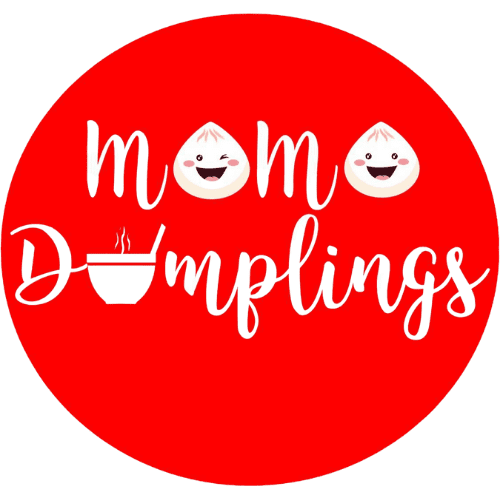
Catering is often one of the biggest wedding expenses, typically taking up 40–50% of the total budget. With average costs ranging from $50 to $150 per guest, food and beverage choices can have a major influence on how much you spend overall.
The good news is that couples don’t need to compromise on quality or experience to stay within their means. With a little creativity and planning, it’s absolutely possible to serve delicious, memorable food that fits your budget. From food trucks and buffets to taco bars and pizza stations, there are plenty of ways to make your wedding meal both special and cost-effective.
Cost-Effective Planning and Budgeting
Careful planning and realistic budgeting are the most effective ways to manage wedding catering expenses. By setting clear spending limits and understanding how your choices affect costs, you can enjoy a beautiful meal without added stress.
Setting a Catering Budget
Establishing a catering budget early in the planning process helps prevent overspending and guides every food-related decision that follows.
A general rule is to allocate 40–50% of your total wedding budget toward catering. This includes not just food but also beverages, service staff, rentals, and additional fees.
One of the easiest ways to manage catering costs is by adjusting your guest list. Because catering is charged per person, even trimming the list by 10–20 guests can create extra room in the budget for better ingredients or presentation.
When it comes to your menu, choose affordable yet crowd-pleasing options. Dishes featuring chicken, pork, or vegetables tend to be less expensive than steak or seafood, and comfort foods often win over guests just as easily. Whenever possible, use seasonal and locally sourced ingredients to save on transport costs while keeping flavors fresh.
You can also simplify your meal format to cut costs. Family-style dining, where guests share platters, can reduce expenses by up to 20%. Limiting the number of entrées or courses can make a big difference, too.
Quick Tip: Ask your caterer for a detailed, itemized quote. When food, labor, and service charges are clearly separated, it’s easier to see where savings can be made.
Managing Guest Expectations
Open communication with guests helps you stay within budget while still delivering a memorable experience.
Consider the Time of Day
Hosting a morning or brunch wedding is often cheaper than an evening reception. Light fare such as pastries, fruit, and coffee costs significantly less than a full dinner menu and creates a relaxed, joyful atmosphere.
Simplify Beverage Service
Alcohol is one of the most expensive catering add-ons. You can save considerably by offering a limited bar with just beer, wine, and one or two signature cocktails instead of a full open bar. Skipping or making the champagne toast optional can further reduce costs without sacrificing fun.
Get Creative with Dessert
A towering multi-tier cake looks beautiful, but it isn’t always budget-friendly. Instead, consider:
-
A dessert table with cupcakes, cookies, or mini treats.
-
A candy bar or DIY sweet station for something interactive.
-
Sheet cakes are easier to serve and much cheaper to make.
Focus on Presentation
Even simple meals can look elegant with thoughtful presentation. A well-decorated buffet or neatly styled grazing table can feel upscale without additional spending on premium ingredients.
Choosing a Caterer for The Big Day
Finding the right caterer can make or break your wedding dining experience and your budget. These two decisions go hand in hand, influencing not only the food but also the atmosphere, service style, and overall guest experience. With a bit of research and smart decision-making, you can find the perfect balance between quality and cost.
Selecting a Caterer
Choosing a caterer is about more than just finding someone who can cook good food. You’re looking for a partner who understands your vision, respects your budget, and can adapt to your needs.
Start by reaching out to a few caterers and requesting detailed quotes. Don’t just compare the total numbers, look at what’s actually included. You’ll want to see the food cost per person, staffing and service fees, equipment rentals (like tables and utensils), and beverage options. Some caterers roll everything into one all-inclusive package, while others charge separately for each service.
When you review the quotes, watch out for hidden costs like delivery fees, setup charges, or cleanup costs. These extras can sneak up on you and inflate the final bill. If you’re flexible with your date, ask whether they offer discounts for weekday or off-season weddings; many do, and the savings can be significant.
Pick a Serving Style That Fits
How you serve your meal plays a huge role in the final price. Each service type comes with its own pros and cons:
-
Plated meals feel formal and elegant, but usually cost the most since they require extra staff and individual plating.
-
Buffets or family-style dining are more relaxed and can cut staffing costs by up to 20%.
-
Food trucks bring a fun, laid-back feel and are often cheaper than traditional caterers.
-
Food stations like pasta bars or taco stands add an interactive element, letting guests customize their plates while reducing waste.
Make Smart Menu Choices
Your menu directly affects the catering total, so a few simple tweaks can make a big difference. For instance, vegetarian or vegan dishes tend to cost less than those with premium meats. Sticking to seasonal, locally sourced ingredients can also help you save and will likely taste fresher, too.
Try to limit the number of entrées or side dishes, as too many options can drive up both ingredient and labor costs. Focus on dishes that most guests will enjoy, rather than trying to please every possible palate.
Before you sign a contract, take time to read reviews or ask for recommendations from past clients. Their feedback will tell you a lot about food quality, punctuality, and how well the caterer handles last-minute changes or dietary needs. If possible, book a tasting session to sample the menu and make adjustments before the big day; it’s worth it for peace of mind.
Choosing the Right Venue
The venue you choose does more than set the scene; it also shapes your catering costs and flexibility. A stunning space that fits your vision and gives you room to customize the menu can help you balance quality and budget with ease.
Look Into Catering Flexibility
Some venues have strict “in-house only” catering policies, while others let you bring in your own vendors. If saving money is a priority, choose a venue that allows outside caterers or at least offers a preferred vendor list with some flexibility. This way, you can compare quotes, negotiate, and find a caterer that truly fits your needs.
Review Packages Carefully
Many venues offer all-in-one packages that bundle catering, bar service, and décor. These can save time, but they’re not always the best value. Before signing, take a close look at what’s actually included. Sometimes it’s worth mixing and matching instead.
-
Some venues include complimentary extras like a wedding cake or dessert table.
-
Others might offer discounts if you combine catering with bar service or rentals.
-
If the package includes items you don’t need, ask if you can swap them out or get a price adjustment.
Be Flexible With Dates and Seasons
Timing can make a big difference. Hosting your wedding on a weekday, Sunday, or during off-peak months (like winter or early spring) can lower both venue rental and catering fees. You’ll often get the same service and quality just at a fraction of the cost.
Explore Creative Venue Options
Think beyond traditional ballrooms. Unique spaces can help you save while adding a personal touch:
-
Local restaurants or cafés may offer set menus at lower prices.
-
Outdoor spaces like gardens or family backyards allow for BBQs or buffet-style setups.
-
Community halls or art spaces often let you bring your own caterer and décor, giving you total control over the budget.
Reducing Food and Beverage Costs
Even though catering can be the biggest portion of your wedding budget, there are plenty of ways to manage it effectively without cutting quality.
Serving Styles and Options
How food is served greatly affects overall cost. Traditional plated meals often require more staff and preparation time, while buffets and family-style dining offer significant savings and a more communal feel.
Other cost-friendly serving ideas include:
-
Interactive food stations like taco or pasta bars.
-
Grazing tables or charcuterie boards for variety and flexibility.
-
Heavy appetizers instead of multi-course dinners for brunch or daytime weddings.
These approaches keep service simple, reduce waste, and maintain a fun, relaxed vibe.
Managing Beverage Expenses
Alcohol can quickly inflate your catering bill. To manage beverage costs:
-
Offer just beer, wine, and one or two signature cocktails.
-
Replace champagne with sparkling cider or punch.
-
Use self-serve drink stations to cut staffing costs.
-
Purchase drinks in bulk for better pricing.
Affordable Dessert Alternatives
You don’t have to splurge on an elaborate wedding cake to create a sweet ending. Consider:
-
A dessert table with assorted mini pastries.
-
A simple sheet cake that’s easy to serve.
-
Cupcakes or cookies styled beautifully to match your theme.
Finalizing the Details
Once you’ve chosen your caterer and venue, the final step is making sure everything runs smoothly. Small details can have a big impact on how seamless and stress-free your wedding day feels.
Confirm Everything Early
A few weeks before the wedding, schedule a final check-in with both your caterer and venue. Go over every detail together to make sure you’re on the same page.
Things to confirm:
-
Final guest count and menu selections
-
Any dietary restrictions or special requests
-
Service timelines for setup, meal, and cleanup
-
What’s provided by the venue or caterer, and what you’ll need to arrange separately
This helps avoid any last-minute surprises and ensures everyone knows their role.
Prepare for the Unexpected
Even with perfect planning, weddings can bring a few surprises, maybe the weather shifts, or a few extra guests show up. A good backup plan keeps you calm no matter what happens.
Consider:
-
Having a tent or indoor option if you’re hosting outdoors
-
Ordering a few extra portions of food
-
Setting aside a small emergency fund for last-minute needs
Make Smart Last-Minute Adjustments
If you’re still looking for ways to save toward the end, a few small tweaks can help:
-
Offer a cash bar or limit open-bar hours
-
Use simple table décor instead of elaborate centerpieces
-
Skip extras like coffee service or premium linens if they don’t add to the experience
Create a Memorable Wedding Catering Experience
A beautiful wedding meal doesn’t have to be extravagant; it just needs to be heartfelt, well-planned, and thoughtfully presented. By striking a balance between creativity and cost-conscious decisions, you can craft a dining experience that your guests will cherish for all the right reasons.
For couples seeking fresh, affordable, and customizable catering, Momo Dumplings offers creative menu options, ranging from interactive dumpling stations to family-style platters, perfect for weddings of any size or theme.
Make your day unforgettable with Momo Dumplings, where great food meets great celebration.
